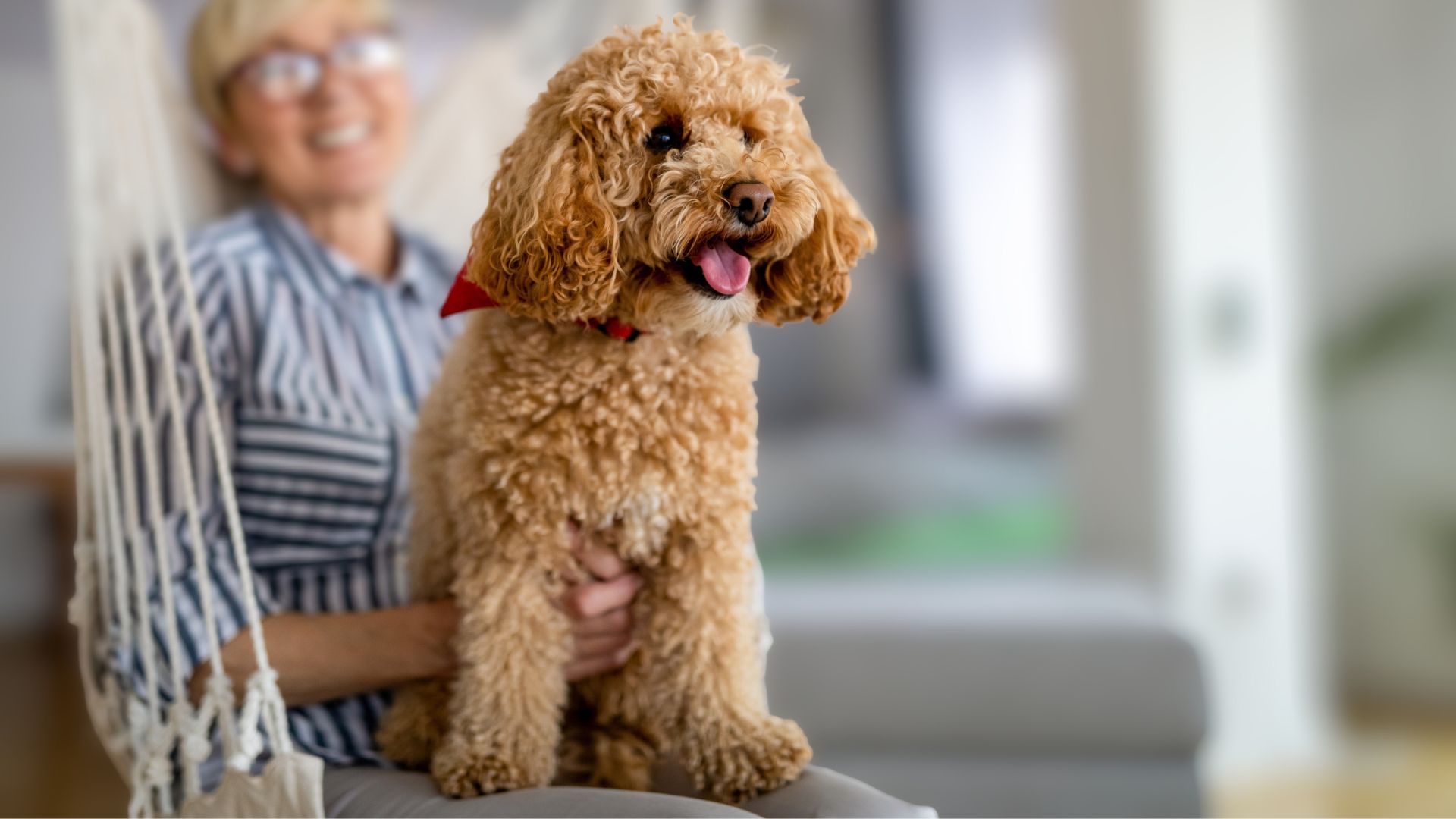Few things are as instantly uplifting as a warm, wagging tail and a furry friend leaning into your lap. Whether you’re going through a tough time or just need a gentle nudge of comfort, dogs have a remarkable way of connecting with our emotions. Spending time with dogs, especially petting or cuddling them, can reduce stress, lower blood pressure, and even ease symptoms of anxiety and depression. It’s no wonder therapy dogs are becoming regular visitors in hospitals, schools, and retirement homes.
While dogs of all sizes can provide emotional comfort, compact breeds hold a special place in therapy work. Their small stature makes them easier to transport, manage, and cuddle, important qualities when navigating tight spaces or visiting people confined to beds or chairs. However, not every little dog is cut out for the job. Temperament, patience, and affection are just as important as size.
In this article, we’ll highlight the best compact dog breeds for therapy, each one offering a unique blend of gentleness, sociability, and heartwarming charm perfect for brightening someone’s day.
Compact Dog Breeds For Therapy
1. Cavalier King Charles Spaniel
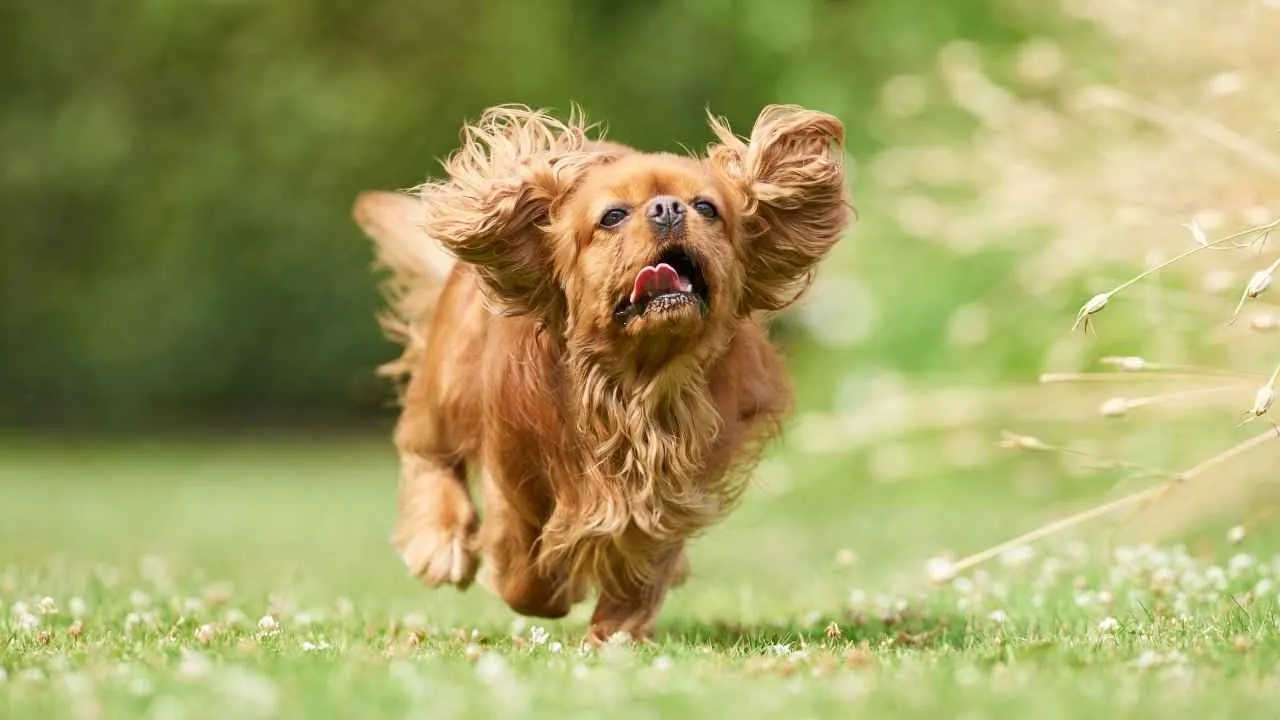
Also known as Cavies, Charlies, or Cavaliers, this beloved toy breed traces its lineage back to 17th-century England. Developed from the English Toy Spaniel, it gained popularity thanks to its resemblance to earlier spaniels favored by King Charles II himself.
Compact and elegant, adults typically stand 12–13 inches tall and weigh between 13–18 pounds, making them ideal lap dogs and travel companions. Their silky coat, long feathered ears, and soulful eyes contribute to their irresistible charm.
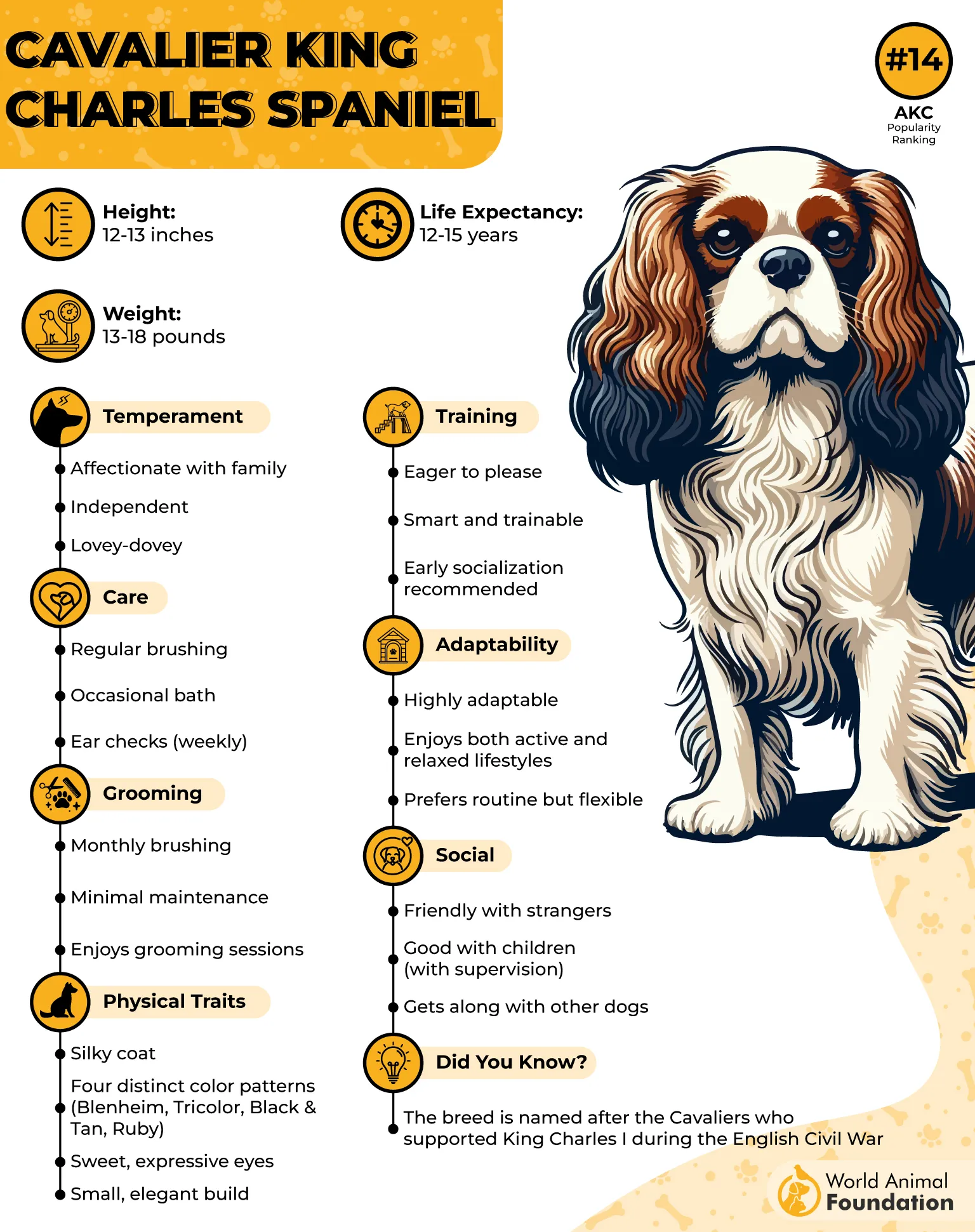
Temperament
The Cavalier King Charles Spaniel is known for being affectionate and gentle, as per the AKC. It is one of the best therapy dog breeds. Naturally sociable, they form strong emotional bonds and thrive on close companionship, perfect traits for therapy work.
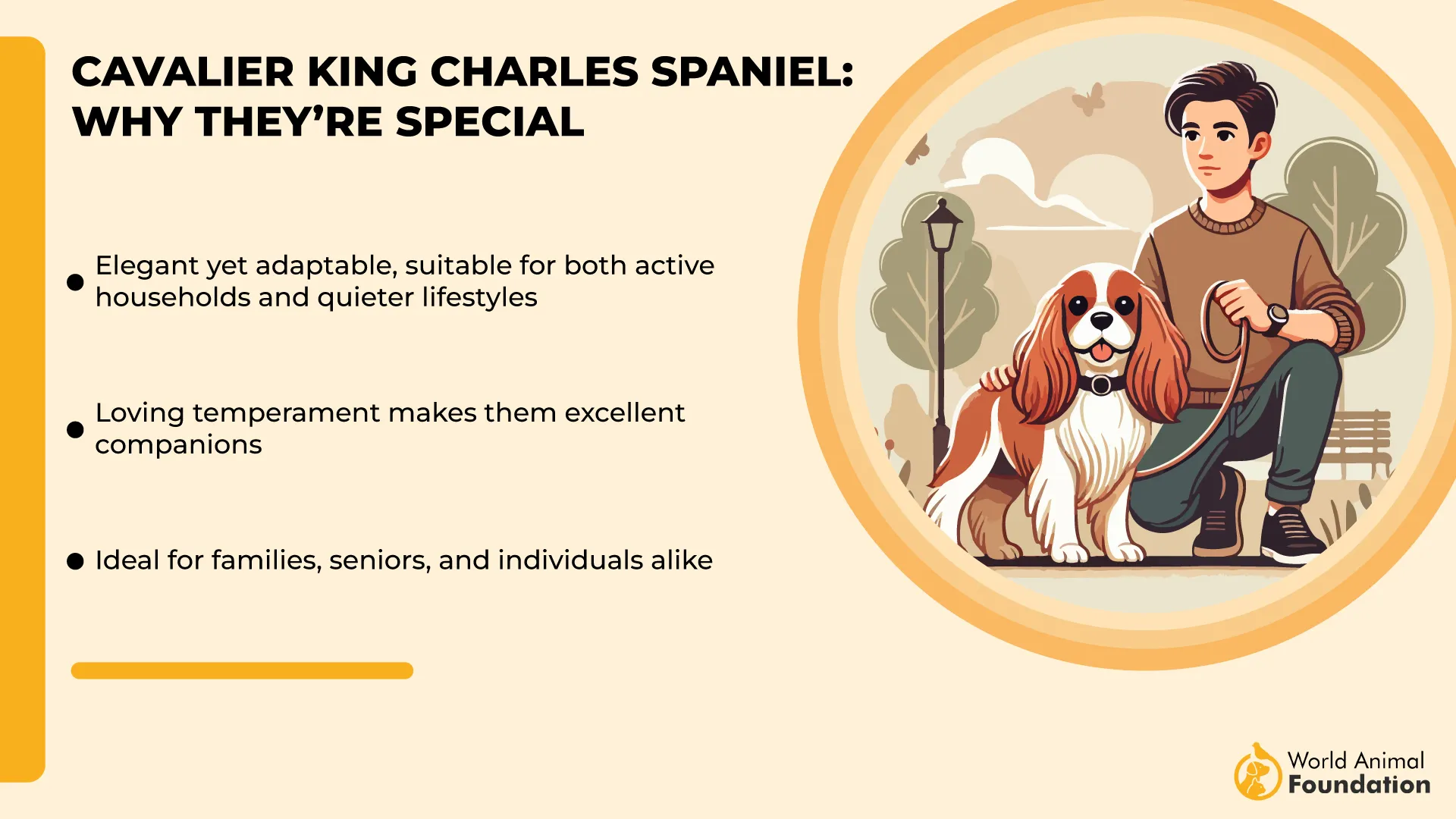
These dogs display an eager-to-please attitude, enjoy meeting people, and rarely show signs of aggression or aloofness. Their intuitive sensitivity allows them to mirror the emotions of those around them, providing quiet reassurance in therapeutic settings. Their adaptability also helps them remain calm in various environments, from bustling hospitals to quiet homes.
Fun Fact
U.S. President Ronald Reagan gifted a Cavalier named Rex to his wife, Nancy, in 1985. Rex even helped light the White House Christmas tree!
2. Havanese
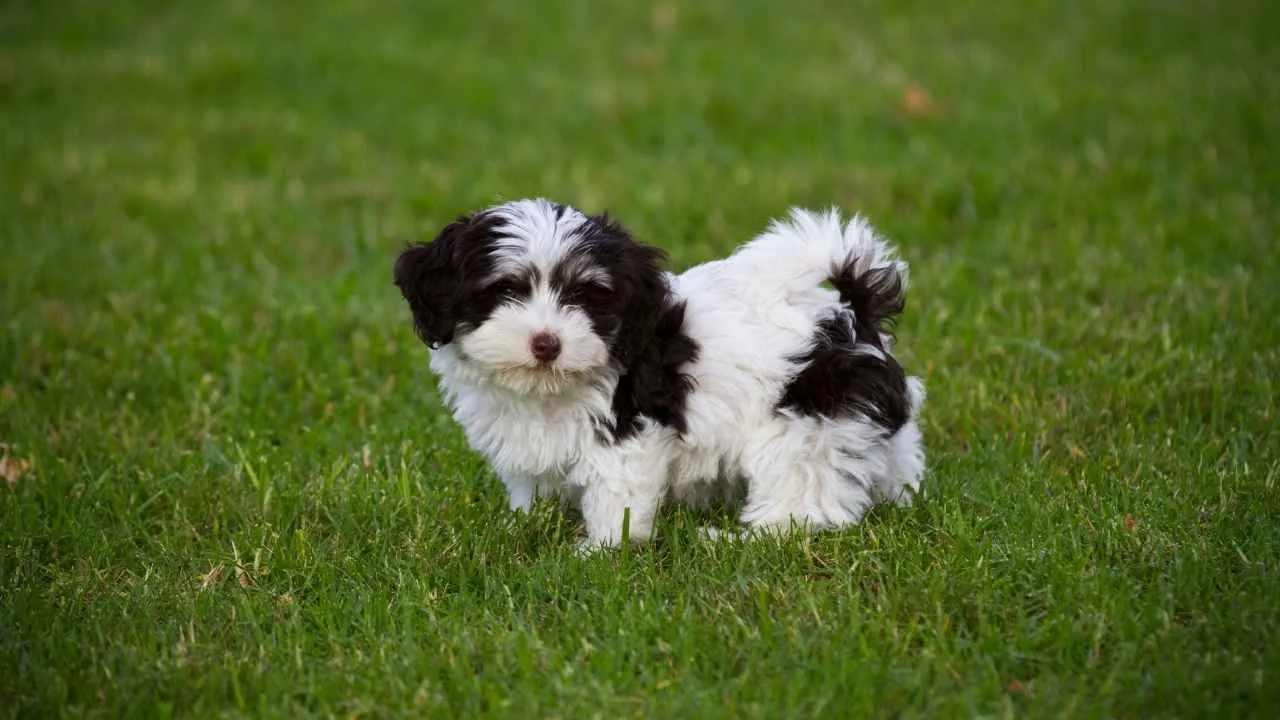
Originating in Cuba and once favored by aristocrats, the Havanese is the nation’s only native dog breed. Descended from Mediterranean Bichon-types, these lively little dogs arrived in the Caribbean via Spanish traders in the 1600s. PDSA reports that the Havanese is a spirited and intelligent breed.
With a compact frame measuring around 8.5 to 11.5 inches in height and weighing 7 to 13 pounds, they are ideally suited for small living spaces and travel. Their standout features include a curled-over tail, long, silky coat (which some owners cord like a Puli), and expressive dark eyes that seem to gleam with mischief and charm. They are both accessible and popular among city dwellers for their adaptability and charisma.
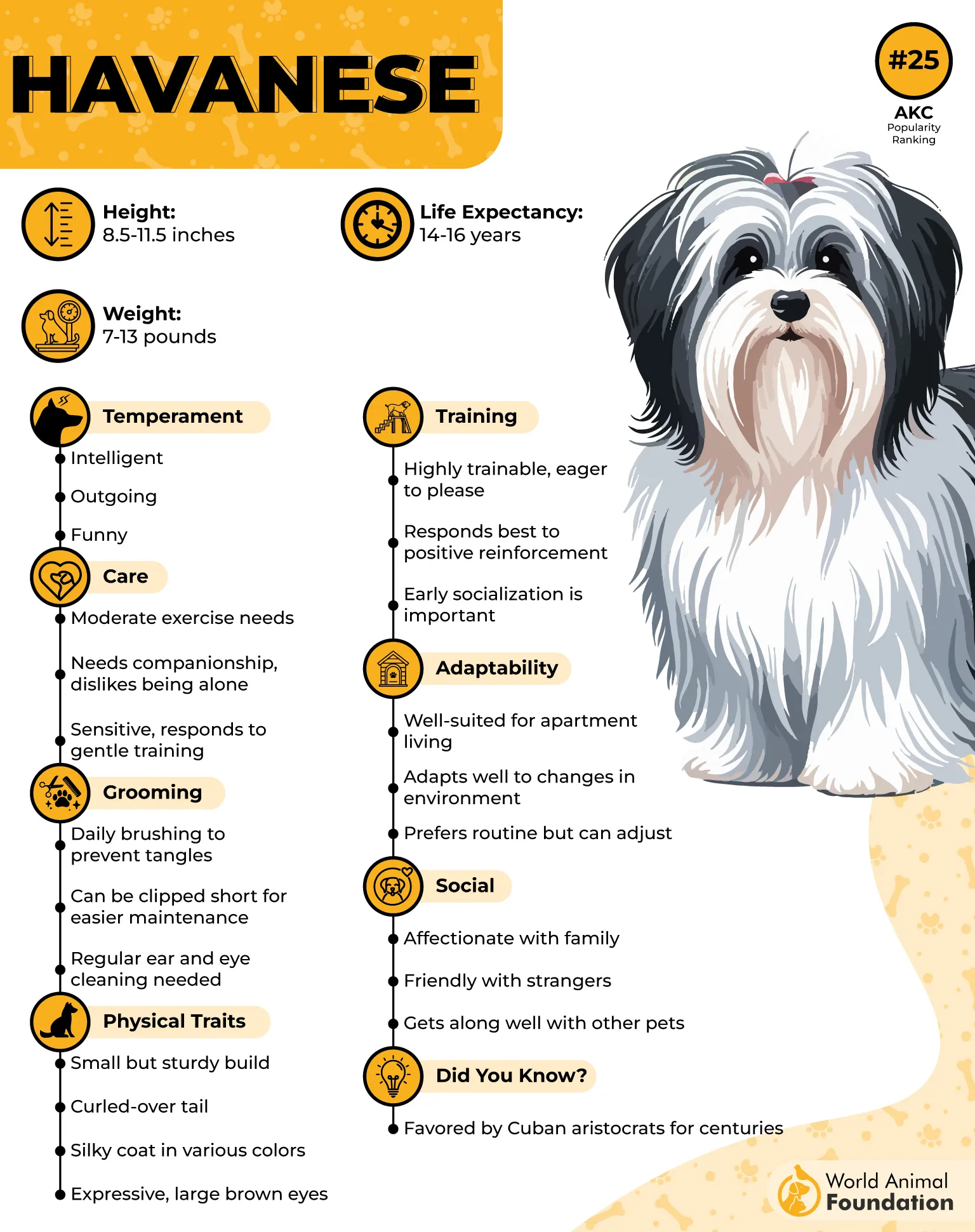
Temperament
Havanese are intuitive, affectionate, and thrive on constant human interaction. Known as “velcro dogs,” they stick close to their people and love nothing more than curling up on a lap or tagging along from room to room.
They are emotionally intelligent, delight in play, and are fast learners, making them exceptional therapy dogs. However, they can be sensitive to being left alone and may develop attention-seeking behaviors without proper training. Their sociable, gentle demeanor makes them wonderful with children, seniors, and even strangers.
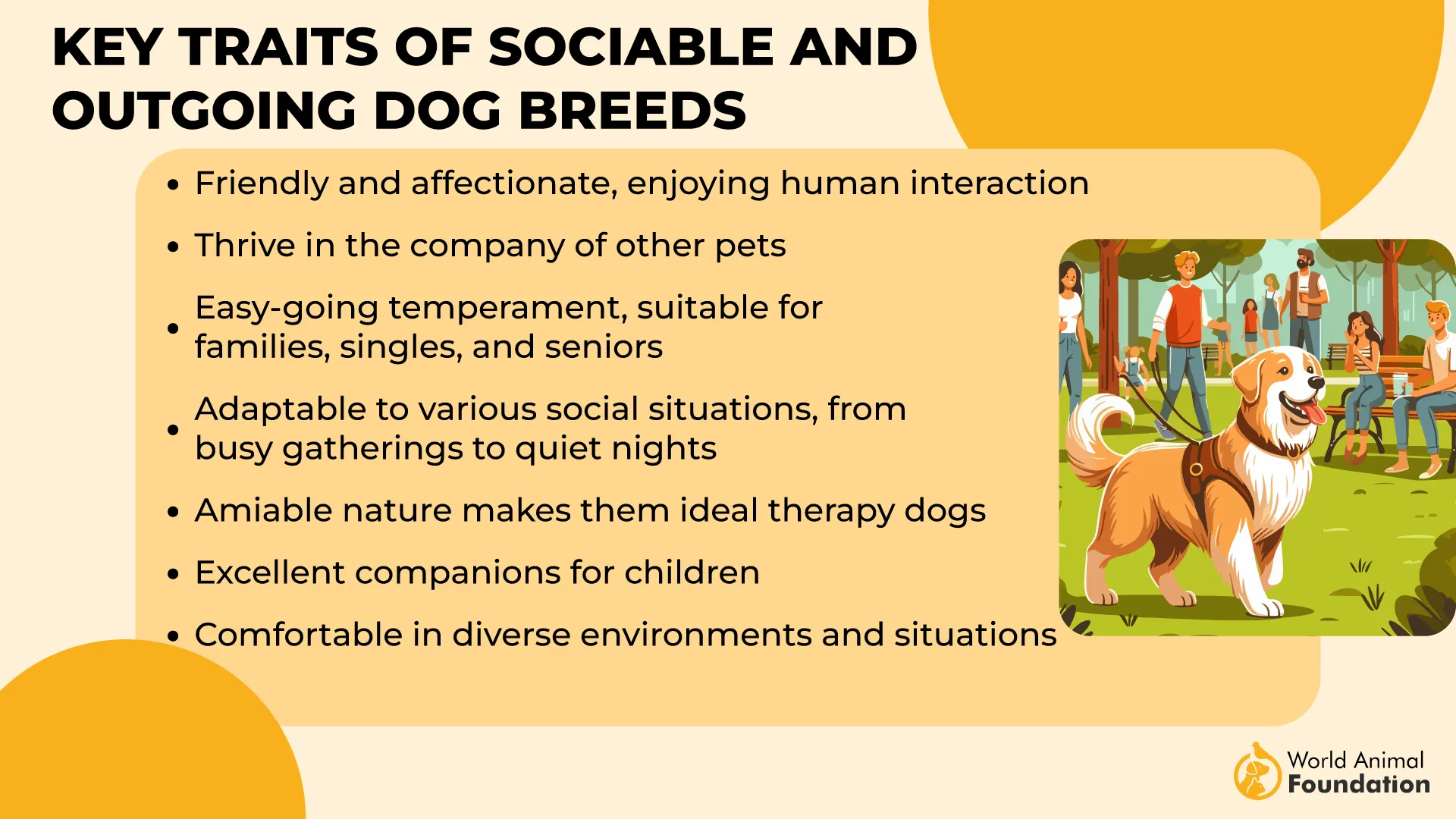
Fun Fact: The Havanese’s silky coat doesn’t shed, making them a low-allergen companion when groomed regularly.
3. Bichon Frise

The Bichon Frise is a small, merry companion dog with roots in the Mediterranean and Tenerife. Standing 9.5 to 11.5 inches tall and weighing 12 to 18 pounds, this cheerful breed is known for its cloud-like, hypoallergenic white coat and rounded appearance that frames expressive dark eyes and a black button nose.
Once a royal favorite in France and Spain, the breed later charmed circus crowds with its playful nature. Today, it remains a lovable choice for families and therapy work alike. Britannica notes that the Bichon Frise enjoys spending time outdoors and benefits from daily walks, but it can also get sufficient exercise indoors through active play.
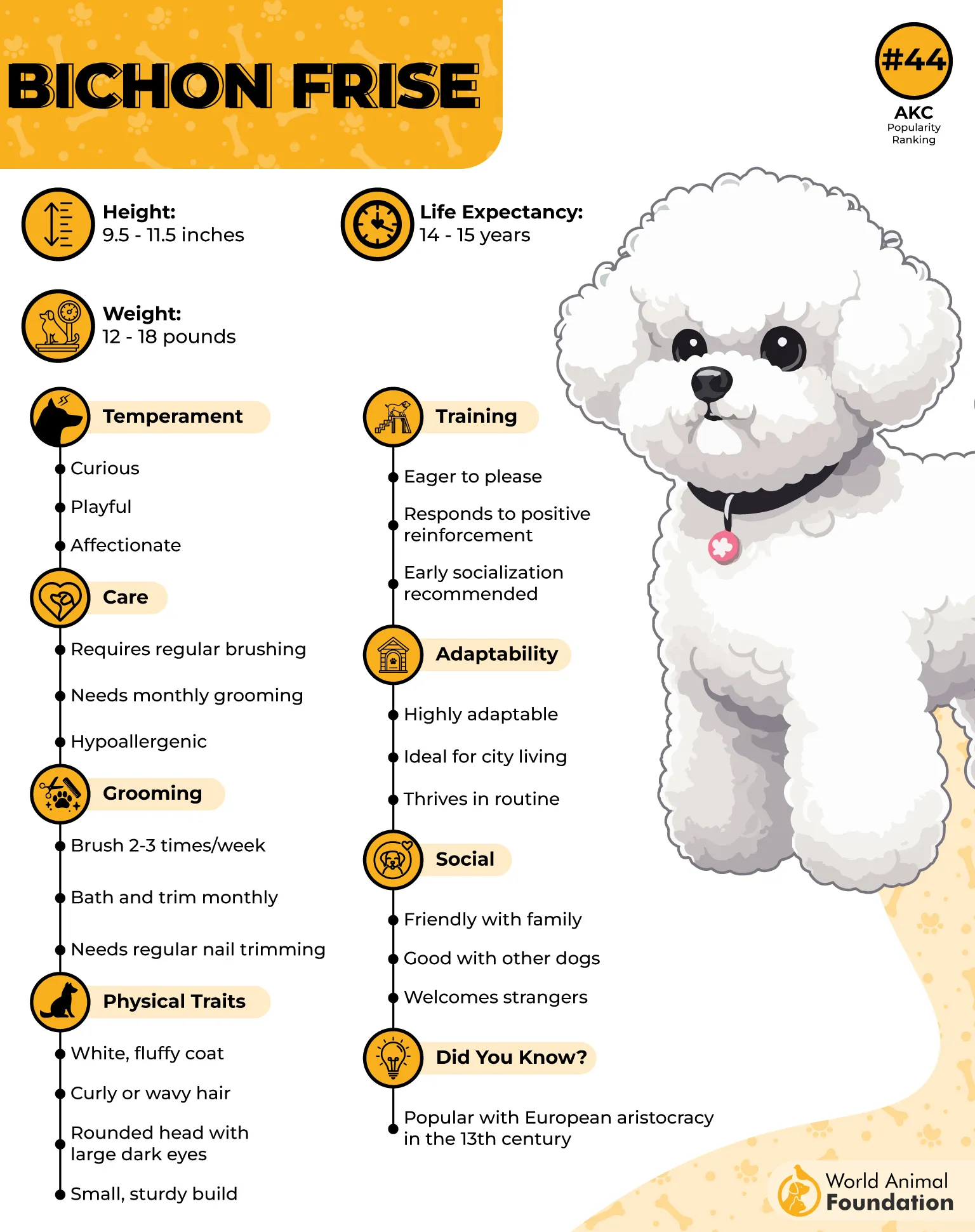
Temperament
Bichons have a vibrant, sunny personality that makes them naturally suited for emotional support. They’re sociable, affectionate, and get along easily with people and other pets. Their adaptable nature helps them thrive in various environments, from city apartments to elder care centers.
Though full of pep, they’re also easygoing and rarely reactive to noise or change. Their eagerness to please and gentle disposition make them highly trainable and emotionally intuitive, qualities ideal for therapy roles.
Did you know? French King Henry III adored the Bichon Frise so much, he carried his in a ribboned basket around his neck!
4. Shih Tzu
Also affectionately called the “Little Lion” or “Chrysanthemum Dog,” the Shih Tzu has a royal past as lavish as its flowing coat suggests. Originating in Tibet over a thousand years ago and later cherished by Chinese royalty, this toy breed was gifted as a symbol of companionship and peace.
With a height of about 10 inches and a weight ranging from 9 to 16 pounds, the Shih Tzu is compact yet sturdy. Their long, double-layered coat, available in a rainbow of colors, gives them a distinct, plush appearance, though many owners opt for a practical “puppy cut” to manage grooming. These regal lapdogs are also recognized for their flat, brachycephalic faces and expressive, dark eyes.
Temperament
Shih Tzus are revered for their joyful and affectionate disposition. PetMD says that Shih Tzus are cheerful and lively companions. They thrive on human connection and are equally content playing or cuddling. Their warm and gentle nature allows them to bond well with children, seniors, and even other dogs and pets. They are great emotional support dogs.
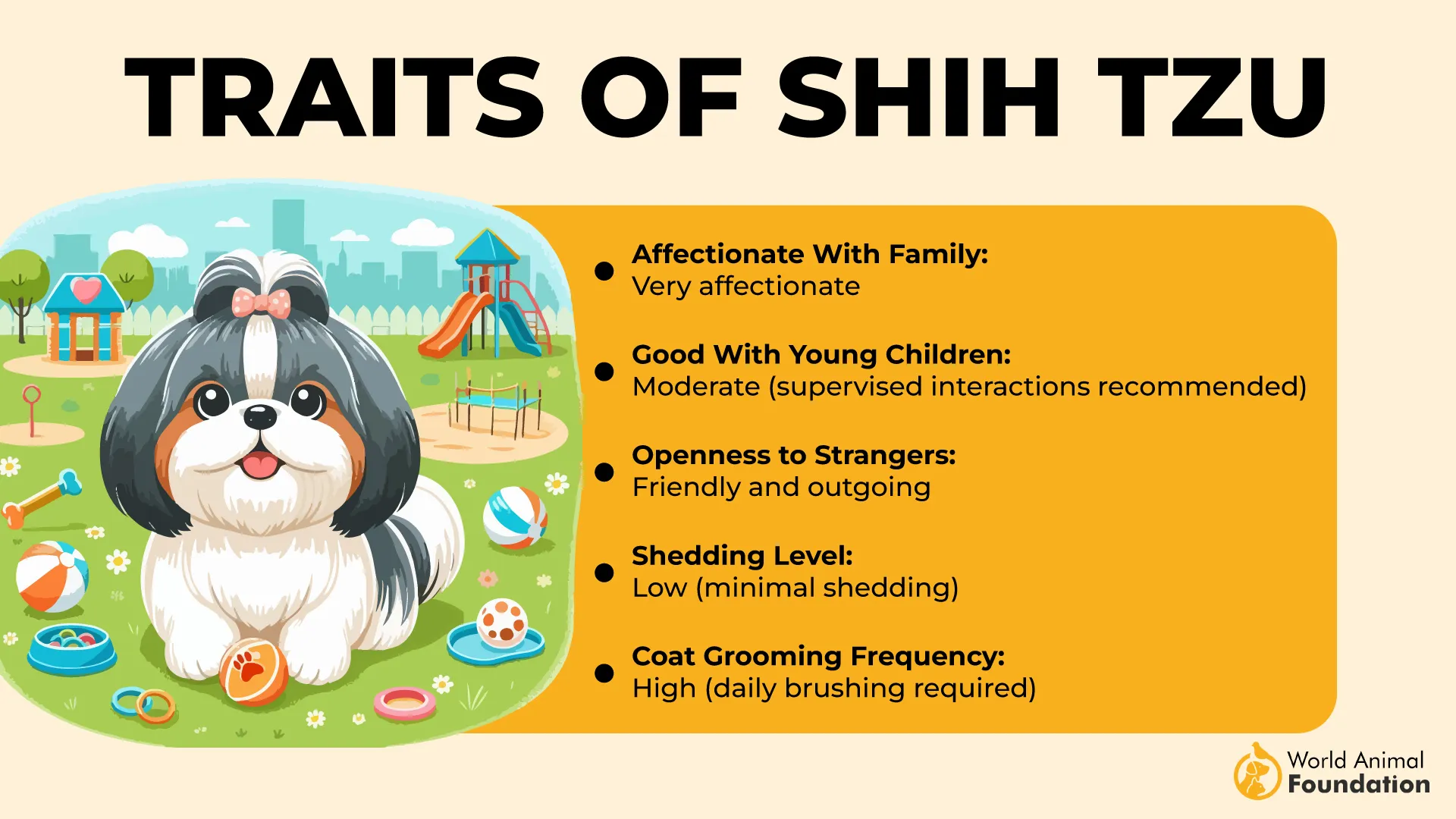
These dogs are alert yet rarely aggressive, and their natural ability to tune into human emotions helps them excel at offering comfort. Devoted and adaptable, Shih Tzus are intuitive mood-readers and often adjust their energy to match that of their companion, providing emotional ease during therapy interactions.
Did you know? Every living Shih Tzu today can be traced back to just 14 dogs, seven males and seven females—used to repopulate the breed in the 1930s.
5. Toy Poodle
Also known as the “Pudel” in Germany or “Caniche” in France, the Toy Poodle is a regal yet playful breed that seamlessly blends elegance with intelligence. Originally developed as a water retriever in Germany and later adored in France, this petite version of the Poodle stands no taller than 10 inches and typically weighs around 7 pounds.
Despite its aristocratic charm, this affectionate dog breed defining feature is its dense, curly, hypoallergenic coat that comes in various solid colors such as black, white, apricot, red, and even phantom, though the latter is not officially recognized by some kennel clubs. The breed’s coat grows continuously and requires consistent grooming to prevent matting. This makes it a commitment, but also a joy, for dedicated pet owners.
Temperament
Toy Poodles are celebrated for their sharp minds and eager-to-please nature. They are quick learners and adapt effortlessly to routines, making them ideal therapy dogs for structured environments like hospitals or assisted living centers. This breed is affectionate, alert, and deeply intuitive, often forming strong bonds with their handlers while remaining friendly to strangers.
Did you know? The Toy Poodle’s name comes from the German word pudelin, meaning “to splash.”
6. Papillon
Also known as the Continental Toy Spaniel or “Epagneul Nain,” the Papillon is a refined toy breed with deep European roots dating back to the 16th century. Once cherished by nobles like Marie Antoinette and Madame de Pompadour, this elegant dog graced the canvases of artists such as Rubens, Titian, and Goya.
Weighing just 4 to 10 pounds and standing 8 to 11 inches tall, Papillons are both dainty and resilient. Their most iconic feature, the large, wing-like ears, earns them the name “Papillon,” French for “butterfly.”
They boast a silky, flowing coat predominantly white with various color combinations, and a high-set, feathered tail that arches proudly over the back. They remain a favorite for their agility, showmanship, and charm.
Temperament
Don’t let their delicate frame fool you, Papillons are energetic, alert, and brimming with curiosity. Known for their intelligence and cheerful nature, they provide emotional support and form strong emotional bonds, participating in interactive play or learning new tricks.
Confident and sociable, they thrive on mental stimulation and often excel in therapy roles thanks to their enthusiasm and sensitivity to human emotions.
Fun Fact:
Papillons were so adored by European aristocracy that they appear in countless portraits by Old Masters such as Vermeer, Van Dyck, and Rembrandt.
7. Brussels Griffon
Also known as the Griffon Bruxellois or Petit Brabançon (for the smooth-coated type), the Brussels Griffon is a toy breed hailing from 19th-century Belgium, developed through crosses with the Affenpinscher and local street dogs.
Standing just 7–8 inches tall and weighing around 8–12 pounds, this compact breed carries a surprising amount of charisma for its size. Its hallmark features include a domed head, large expressive eyes, a flat, upturned nose, and either a smooth or rough coat in hues such as red, black, black and tan, or the reddish-black “belge.”
With a thickset build and a self-assured trot, the Griff’s “bearded” look, fringed mustache, and whiskers often earn it the nickname of a “little old man” or even a “monkey-faced” dog.
Temperament
The Brussels Griffon shines in therapeutic roles thanks to its emotional intelligence and deep loyalty. Though tiny, it exudes a strong presence, eager to bond closely with its person. This breed thrives on companionship and is known for its affectionate, alert, and sensitive nature.
These loyal companions are highly responsive to human moods and tend to shadow their owners, offering unwavering support. While their playful side brings comfort and smiles, their keen awareness makes them natural therapy dogs in settings like hospitals and assisted living homes.
Fun Fact: Their signature black muzzle and human-like eyes earned them praise in old folk songs as the charming “bearded dogs.”
8. Coton de Tulear
Hailing from Madagascar, the Coton de Tulear, also known as the “Royal Dog of Madagascar,” is a delightful toy breed prized for its companionship and clownish charm. Weighing between 8 to 15 pounds and standing 9 to 11 inches tall, this small but sturdy pup sports a dense, cotton-like white coat that feels as soft as its name implies. Males tend to be slightly taller and heavier than females.
Their expressive dark eyes and floppy ears covered in fluffy fur only add to their irresistible appeal. With a lifespan ranging from 15 to 19 years, this breed offers long-lasting companionship. Cotons may exhibit tan, black, or fawn hues as puppies, though most grow into a primarily white adult coat.
Temperament
These small dogs are bright, loving, and deeply attached to their people. They thrive on interaction, often shadowing their humans from room to room. These intelligent dogs are known for their gentle demeanor, innate empathy, and a playful spirit that shines through in their favorite antics, such as dancing on their hind legs.
Friendly with both people and pets, Cotons adapt easily to various lifestyles, but their sensitivity means they’re prone to separation anxiety when left alone too long.
Fun Fact: The Coton’s cotton-like coat is not just for looks; it was historically admired by Malagasy nobility for its soft texture and low-shedding qualities.
9. Japanese Chin
The Japanese Chin, also known as the Japanese Spaniel, is a noble toy breed with roots that trace back to ancient China before gaining prestige in Japan. Originally gifted from Chinese emperors to Japanese royalty, these dogs became cherished lap companions of the imperial court.
With their dainty stature, standing 8 to 11 inches tall and weighing between 4 and 9 pounds, these emotional support dogs are perfectly sized for cozy laps and gentle environments. Their most striking features include a luxuriant, silky coat, wide-set, expressive eyes, feathered ears, and a fountain-like tail that elegantly curves over the back.
Coat colors range from black and white to red and white, and even sable or tricolor patterns. While not hypoallergenic, their shedding is manageable with regular grooming.
Temperament
Delightfully affectionate yet refreshingly independent, these therapy assistance dogs are clever and observant companions. They thrive on attention and emotional closeness, often shadowing dog owners with feline-like grace. Despite their aristocratic demeanor, Chins are inquisitive and playful, known for quirky antics and lighthearted mischief.
They adapt well to multi-dog homes, are exceptionally gentle with the elderly, and excel as lap warmers and emotional support animals. Their calm, loyal nature makes them ideal for animal-assisted therapy dogs, particularly in quiet settings.
Fun Fact: Commodore Matthew Perry introduced the breed to the West in 1853 after receiving several as gifts from Japanese nobility.
10. Lhasa Apso
Originally bred in the sacred monasteries of Tibet, the Lhasa Apso, also known as the “Bark Lion Sentinel Dog,” has a legacy steeped in nobility and spiritual symbolism. This small breed was considered a lucky charm and guardian of palaces, revered for their acute senses and dignified demeanor.
Standing around 10–11 inches tall and weighing between 13–18 pounds, Lhasas may be small, but they carry themselves with regal confidence. Their most recognizable feature is their luxurious, floor-length coat, which comes in a variety of shades including gold, honey, black, slate, and white.
Their tail curls distinctively over the back, and their oval-shaped eyes peek through a curtain of facial hair, exuding both wisdom and playfulness.
Temperament
This small dog breed is known for its alert, independent, and confident personality. They are great family dogs. Though wary of strangers, it forms strong bonds with its family and can be amusingly comical in familiar environments.
Their strong watchdog instincts stem from their historical role in guarding monasteries, often making them vocal if not socialized early. Still, they adapt well to apartment living and can be reliably calm, affectionate, and great therapy dogs when well-trained.
Fun Fact: The Lhasa Apso’s coat was so revered in Tibet that it was often compared to the mane of a lion, symbolizing strength and protection.
Conclusion
Compact dog breeds have an incredible ability to provide emotional stability, affection, and a calming presence, especially for those coping with conditions like social anxiety. Whether it’s the dignified Lhasa Apso with its ancient roots or the warm-hearted Cavalier King Charles Spaniel, these small dogs prove that size doesn’t limit impact. Their portable stature, loyal disposition, and gentle temperaments make them ideal as companion animals, especially in therapy settings where deep pressure therapy and emotional bonding are key.
While breeds like the golden retriever and labrador retriever are often celebrated as psychiatric service dogs, compact breeds such as the Yorkshire Terrier and French Bulldog offer similar benefits in a smaller package. For young adults or seniors seeking emotional support, even a mixed-breed adult dog with suitable breed characteristics can become a highly effective service animal. And though beagles may be known for their curiosity, their gentle nature makes beagle therapy dogs just as valuable for companionship and support.


